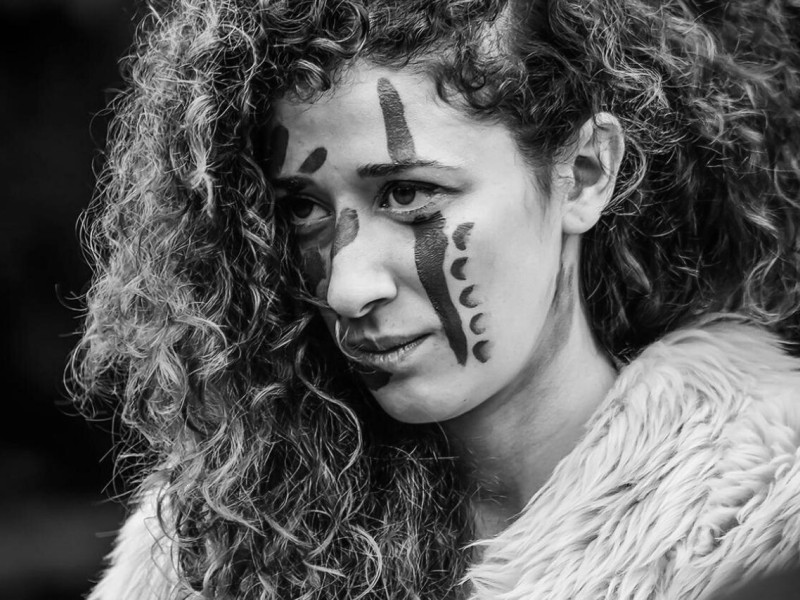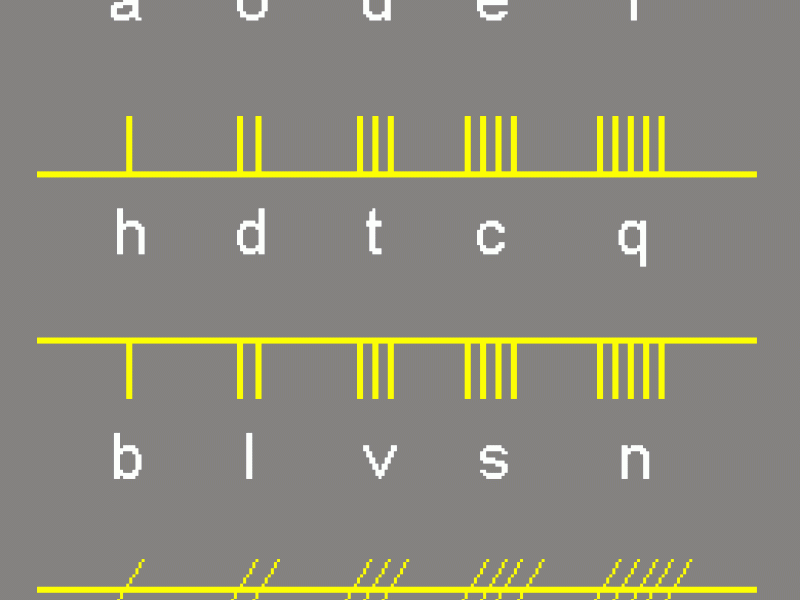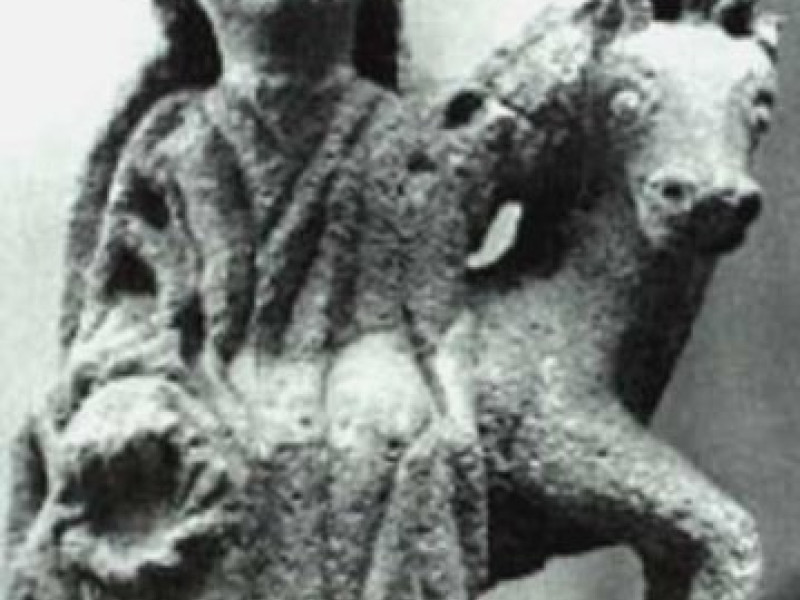The Celtic Carnyx
The carnyx was a famous feature of Celtic culture in ancient times. To the Romans, it was so characteristic of the Celts that they sometimes used it to represent them in artwork. What exactly was the carnyx? What was its origin, what did it look like, and how was it used? This article will answer these questions.
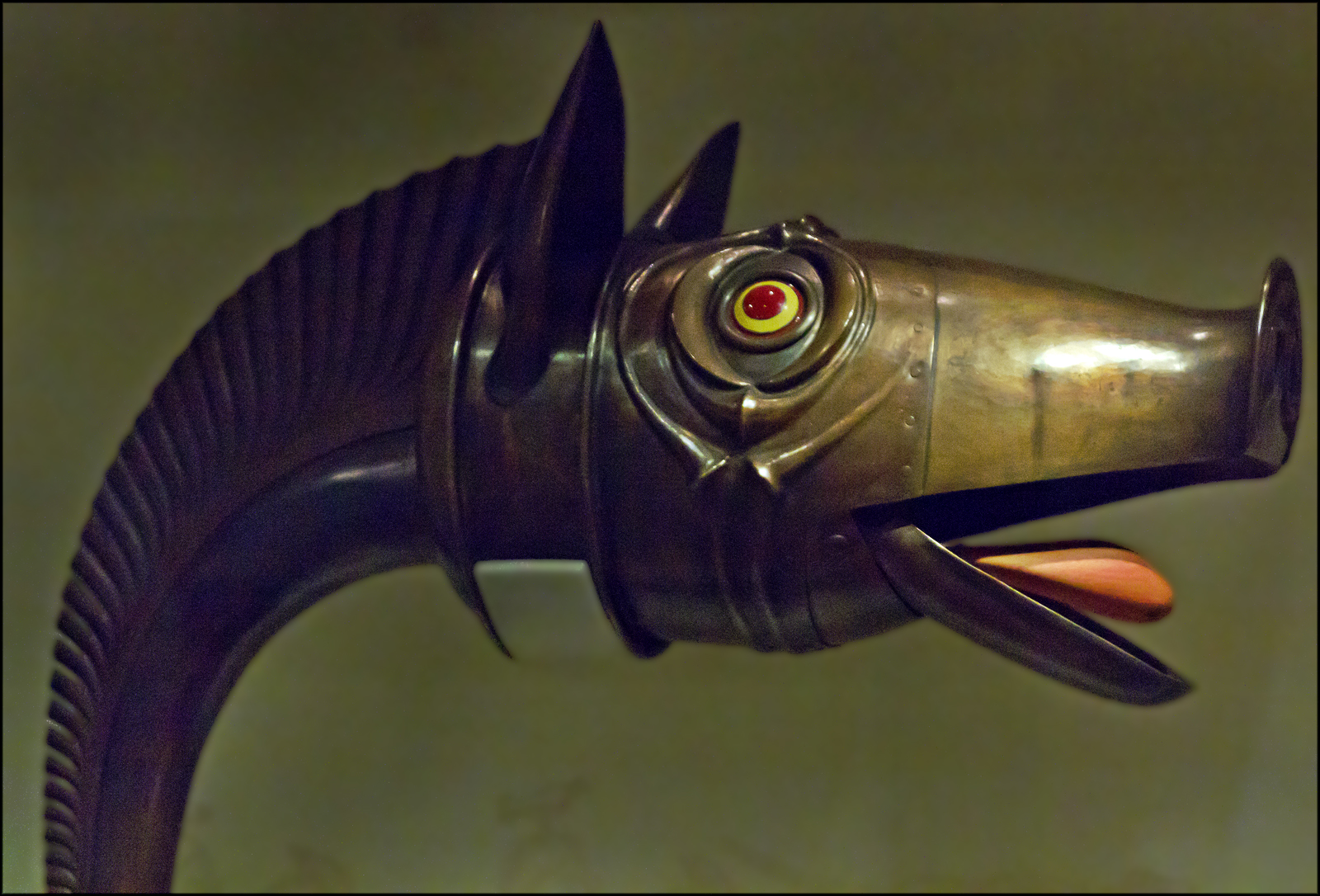
Replica of a Celtic carnyx at the National Museum of Scotland. Photo by dun-deagh, CC-BY 2.0
What Was the Carnyx?
The carnyx was an instrument used by the ancient Celts, usually made of bronze. It was a type of trumpet with a very distinctive shape and design. The shape has been described as an elongated S. Essentially, it was a long pole with both ends curved away from each other.
On one end, there was a mouthpiece through which someone could blow. On the other end, there was a wide bell through which the sound would emerge. The bell was designed to look like an animal’s head, giving it an intimidating presence. The curves on both ends were short, while the central pole was very long. In fact, when held vertically, it was about the height of a man, or possibly a little taller.
Almost without exception, the bell was given the design of a boar’s head. However, one notable example that was found in an excavation had the head of a snake or a dragon. It would appear that the choice of animal was specifically to look intimidating, and the boar was simply the most popular animal used to convey such a thought, while not being the only possible choice.
To add to the uniqueness, there is evidence that some carnyces even had a model tongue on a hinge inside the mouth. This would flap up and down as air went past it, which would help the resulting sound to be even more unusual and dramatic.
How Was the Carnyx Used?
It appears that the carnyx was primarily used in the context of military engagements. This makes sense in view of the intimidating design of the carnyx. Within a Celtic army, there would be a group of men wielding carnyces. By placing the mouthpiece to their lips, the rest of the carnyx would stand high above the rest of the troops.
This would allow the sound emitted by the carnyx to travel over the Celtic army and be easily heard by the enemy. The purpose was presumably to strike fear into the hearts of the enemy. Roman accounts indicate that this was effective. In addition, it is likely that the carnyx was used to motivate the Celtic soldiers to be courageous and fierce.
A Ritual Use
However, there is evidence that the carnyx was not just used in a military context. For example, a carnyx found at Tintignac did not have a curve at the lower end for the mouthpiece. Rather, the mouthpiece was fixed straight onto the end of the main pole. This means that it cannot have been played vertically; rather, it must have been played almost horizontally. This does not make much sense in a military setting, but it does make sense in a ritual context.
For this reason, some scholars argue that some types of carnyces were used to provide music for sacred rituals. For instance, historian William Horsted wrote:
“When played softly, their subtle, intimate music was also fitting for use in ritual.”
Therefore, the carnyx was likely a common feature within Celtic society, not just a feature of Celtic warfare.
Where Was the Carnyx Used?
The carnyx was used by the ancient Celts at large, so it was used over huge regions of Europe. It seems to have been particularly common among the Celts of Gaul. Outside of Gaul, it was also used among the Celts of Britain, as far north as modern Scotland. Whether the Scots of Ireland used it too is unknown. In any case, the range among Celtic lands within which the carnyx was found shows that it was not used by just one single Celtic-speaking group.
Rather, it appears to have been a characteristic of most Celtic peoples. And, in fact, its use even spread to neighboring, non-Celtic nations, as noted by Celticist John T. Koch.
One example of this is seen from the Dacians. They were a non-Celtic people in the Balkans, although they heavily adopted Celtic culture. They started adopting this culture (in the form of art styles, for example) in the third century BCE. Evidence of the use of the carnyx among this nation has been found. However, some scholars have suggested that this evidence could, instead, have come from the Celtic armies that passed through the Balkans in the third century BCE.
In India?
Many online sources claim that a carnyx is seen on a piece of ancient artwork in India, attesting to the strong Iron Age connections between the two locations. However, such claims should be treated cautiously. After all, India was extremely far from the furthest east the Celts ever got. As one scholar noted:
“A possible image may appear in India (Foghlú 2014), but this is based only on stylistic similarities and should be treated with caution.”
This supposed carnyx may just be an item with a coincidentally-similar appearance.
When Was the Carnyx Used?
Academics believe that the carnyx was used among the Celts from about 300 BCE to about 300 CE. One of its earliest appearances in history comes from an ancient depiction of a carnyx on a Greek coin, which is thought to commemorate the Greek victory over the Celts after their attack on the Greek sanctuary of Delphi. This occurred in 279 BCE.
Of course, there is no way of knowing if it might have been used even earlier. Written sources describing Celtic customs prior to 279 BCE are very limited, so the lack of written references to the carnyx from before the third century BCE is not necessarily significant.
While it is true that the earliest archaeological traces of carnyces also date to the beginning of the third century BCE, only about a dozen specimens have ever been found (and seven of these from a single site). Therefore, the archaeological evidence is too limited to make any definitive claims about when it started to be used. What we can be sure of is that its use began at least as early as the beginning of the third century BCE.
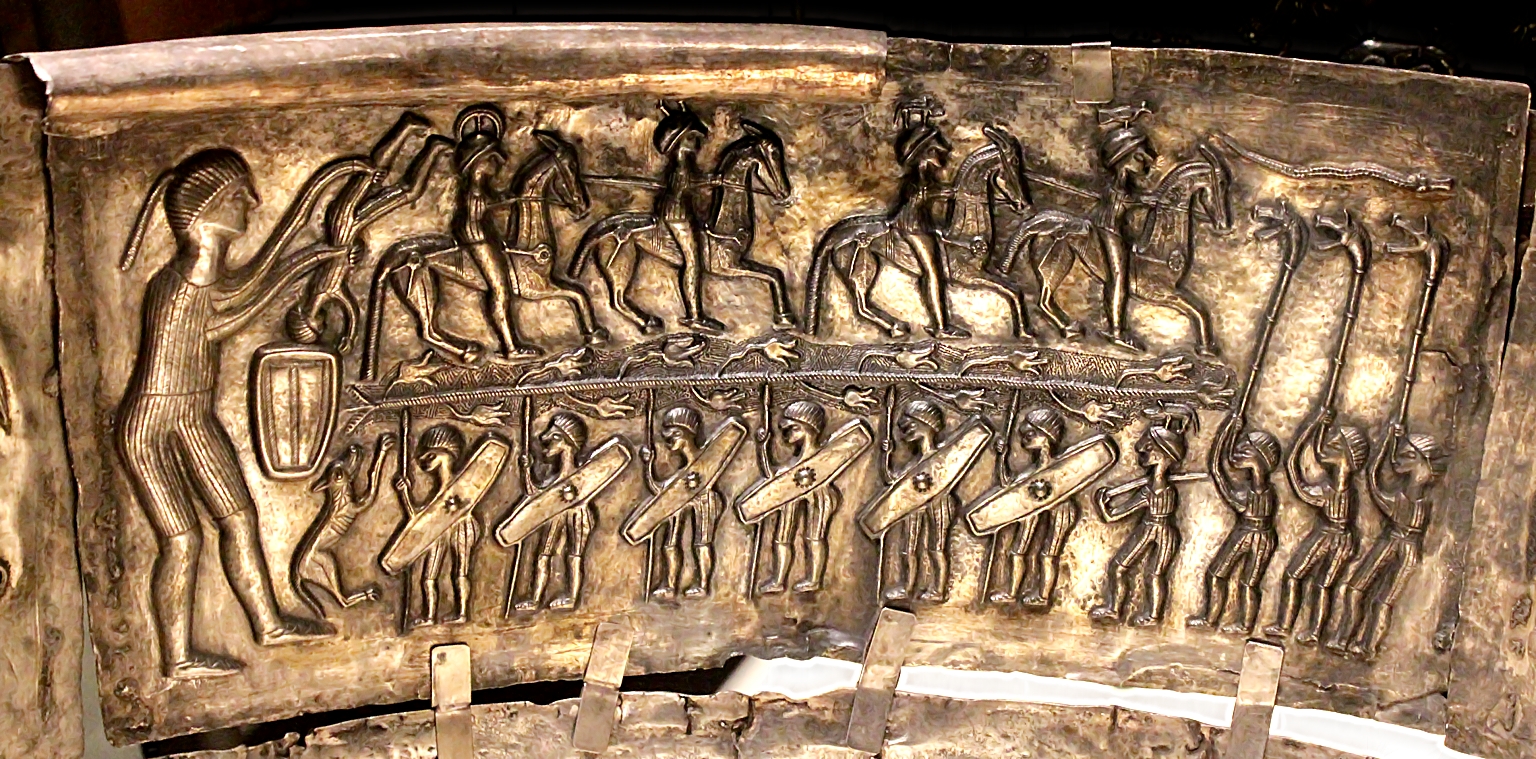
The Gundestrup Cauldron, showing Celtic warriors playing the carnyx on the right. Photo by Claude Valette, CC-BY 2.0
The Origin of the Carnyx
The origin of the carnyx is unknown, but scholars suggest that it came from the Etruscan lituus. Like the carnyx, this was a type of metal instrument. It was a trumpet in the shape of a J, similar to the elongated S shape of the carnyx but without the curved bell on the end. It was, therefore, much simpler than the carnyx. This would make sense in the context of a predecessor.
Furthermore, the use of the carnyx appears to have been concentrated in the region which was dominated by the La Tène culture. This was a form of Celtic culture which emerged in eastern Gaul from c. 500 to 450 BCE and spread to the rest of Celtic lands. However, it only had a very limited impact on the Celtiberians, in modern Spain and Portugal.
Numerous other pieces of evidence demonstrate that various aspects of La Tène culture came through Etruscan influence. In fact, the Etruscan (and generally Mediterranean) influence in the early development of this form of Celtic culture was truly profound. For this reason, it makes all the sense in the world to associate the Celtic carnyx with the earlier Etruscan lituus.
Like the carnyx, the lituus was commonly used by the Etruscans and Romans in warfare. Interestingly, it was also used for funeral ceremonies, and this may relate to the ritual use of the carnyx among the Celts.
Ancient Descriptions of the Carnyx
One of the earliest descriptions of the Celtic carnyx comes from Polybius, a Greek historian of the second century BCE. He described the Battle of Telamon, which was fought between the Romans and the Celts in 225 BCE. His description of the use of the carnyx provides a fascinating insight into how and why the Celts used it in battle:
“For there were among them such innumerable horns and trumpets, which were being blown at the same time from all parts of their army, and their cries were so loud and piercing, that the noise seemed to come not from human voices and trumpets, but from the whole countryside at once.”
This description makes it evident that the use of the carnyx had a dramatic, intimidating effect over whoever faced the Celtic army. No wonder they employed it in their warfare. It fits everything else we know about the Celts, such as the fact that they generally used intimidation tactics in battle.
Another frequently-cited reference to the carnyx comes from Diodorus Siculus, a Greek historian of the first century BCE. Regarding the Celts, he wrote:
“Their trumpets are of peculiar nature and such as barbarians use, for when they are blown upon they give forth a harsh sound, appropriate to the tumult of war.”
Diodorus notes here that these trumpets were ‘peculiar’. They were unlike anything the Greeks or Romans were accustomed to within their own society. He also notes that they gave a ‘harsh sound’.
Ancient Depictions of the Carnyx
If we just had to rely on the ancient descriptions of the carnyx, we would know very little about it. Fortunately, there are many depictions of the carnyx on ancient monuments and items. For example, as mentioned above, there is a depiction of one on a Greek coin from the third century BCE.
There are a number of Roman depictions of the carnyx on monuments celebrating victories over their enemies. One important example of this is the Triumphal Arch of Orange in France. This was constructed very early in the Roman Empire. It was built to honor those who fought in the Gallic Wars. As such, it features pieces of Celtic iconography. It shows the carnyx being carried away apparently as a victory trophy.
One of the most famous depictions of the carnyx comes from the Gundestrup cauldron. It was found in Denmark and dates to approximately the first century BCE. This shows a group of soldiers with three carnyx players behind them. This clearly shows how the carnyx was played, held high up above the soldiers.
What Did the Carnyx Sound Like?
No one can ever know exactly what the carnyx sounded like. We do have Diodorus’ reference to it creating a ‘harsh sound’, but that is not very specific. Fortunately, archaeologists have constructed a replica. This was based on the Deskford carnyx. The Deskford carnyx was a remarkable artifact recovered by archaeologists in about 1816 in the town of Deskford, Scotland.
This artifact is special because it was used as the basis for a reconstruction of a carnyx, made in 1992. By using this, we can get a glimpse into what this ancient instrument sounded like. This reconstruction revealed that various different sounds could be made with this seemingly simple instrument. A recording can be found here:
How Was the Carnyx Made?
The carnyx was primarily made with bronze. However, the Deskford carnyx was made with a mixture of bronze and brass (another thing that makes it so special compared to other carnyces). An alloy of copper, tin, and lead was usually used for the mouthpiece, as well as some other small parts of the design.
As one scholar explained:
“Only highly developed techniques enabled Celtic craftsmen to construct wind instruments with a length of 1.8 m, consisting of at least 28 single elements and weighing only 1.6 kg.”
Conclusion
In conclusion, the carnyx was a special S-shaped trumpet used by the Celts to intimidate their enemies in warfare. They were also likely used in a ritual context. They were long and held up high during battle, emitting a frightening sound. The end of the carnyx was designed to look like the head of a boar, or occasionally another intimidating animal, such as a snake. They were used from c. 300 BCE to c. 300 CE across many Celtic lands. Although their origin is unknown, it is likely that the carnyx evolved from the Etruscan lituus, in line with other Etruscan influences within early Celtic La Tène culture.
Sources:
Swan, David, The Carnyx on Celtic and Roman Republican Coinage, 2018
Koch, John T., The Celts: History, Life and Culture (Volume 1), 2012
Horsted, William, British Celtic Warrior Vs Roman Soldier: Britannia AD 43–105, 2022
Gosden, Christopher, Ulmschneider, Katharina, Crawford, Sally, Celtic Art in Europe: Making Connections, 2014
